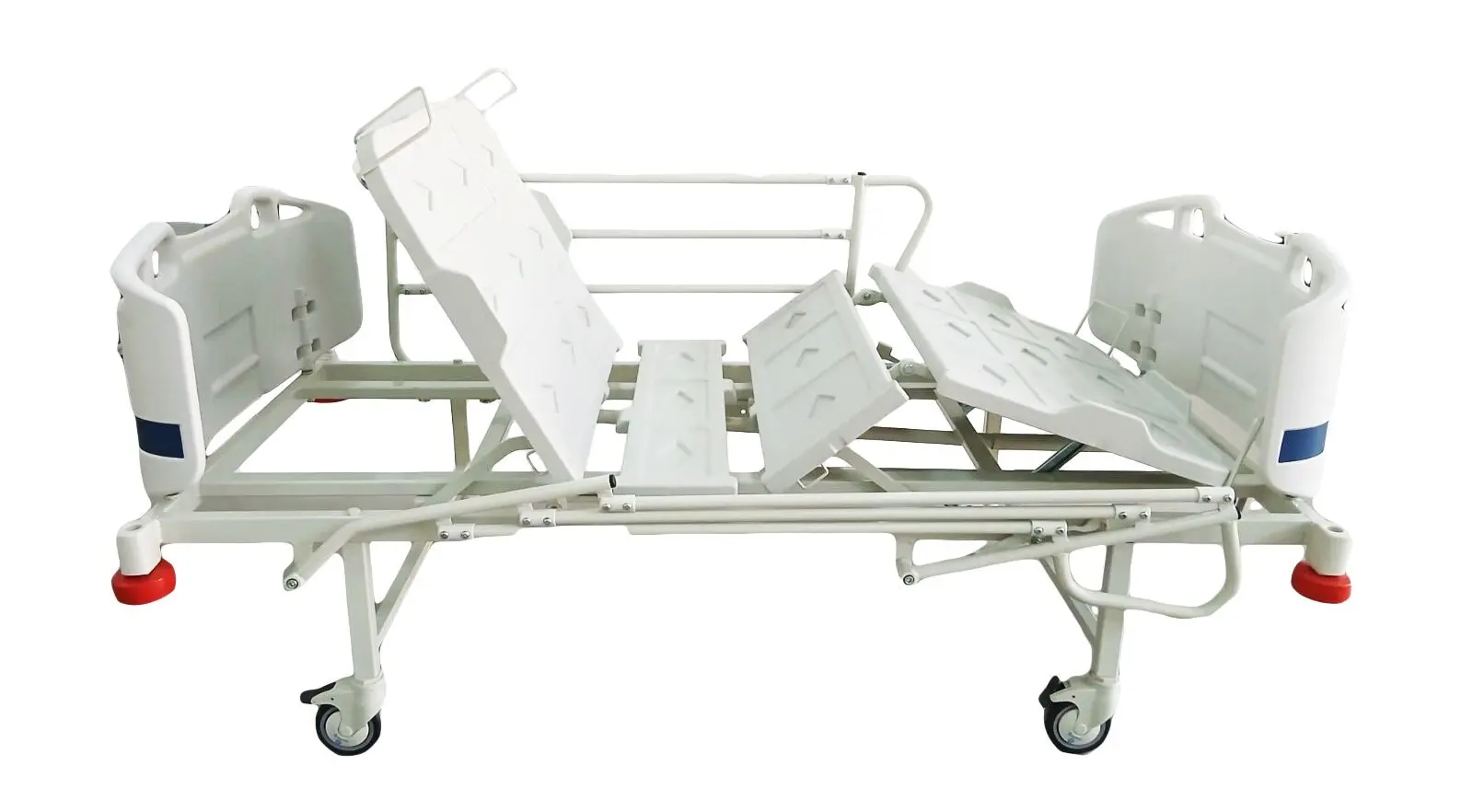Introduction: Why Choosing the Right Hospital Bed Matters
A hospital bed is not just a piece of furniture—it is an essential medical tool that directly impacts patient comfort, safety, and recovery. For caregivers and healthcare professionals, it also determines how efficiently daily care tasks can be performed.
With so many options available, from manual models to electric beds with 2, 3, or even 5 motors, patients and families often ask: “Which is the best hospital bed?”
This 2025 guide explores hospital bed types, key features, and selection criteria, so you can make the right choice based on patient needs.
Key Factors in Choosing the Best Hospital Bed
- Patient Condition and Care Duration
- Short-term patients may require simpler beds.
- Long-term or critical care patients need advanced motorized systems.
- Motor Functions
- 2-motor beds: head and leg adjustment.
- 3-motor beds: includes height adjustment.
- 5-motor beds: adds Trendelenburg and Reverse Trendelenburg.
- Care Environment
- Home care: compact, user-friendly models.
- Hospitals & clinics: durable, multi-functional systems.
- Safety Features
- Side rails, central braking system, antibacterial surfaces.
- Manufacturer Reliability
- Certifications, after-sales service, and export readiness are crucial.
Types of Hospital Beds
Manual Beds
Manually adjustable with cranks, suitable for short-term use.
- Pros: Affordable, simple.
- Cons: Requires physical effort, limited comfort.
Electric Beds
Controlled with remote systems for easy operation.
- Pros: Comfort, multiple positions, safety features.
- Cons: Higher price than manual beds.
- Details: Electric Hospital Beds
2-Motor Beds
Allows head and leg adjustment.
- Best for home care.
- Affordable and practical, but lacks height adjustment.
3-Motor Beds
Head, leg, and height adjustments included.
- Suitable for both hospitals and home care.
- Provides ergonomic benefits for caregivers.
- Limit: No Trendelenburg function.
5-Motor Beds
The most advanced hospital beds, designed for ICUs and critical care units.
- Functions: head, leg, height, Trendelenburg, Reverse Trendelenburg.
- Pros: Maximum patient safety and comfort.
- Cons: Higher investment cost.
- More info: 5-Motor Hospital Bed Guide
Best Options for Home Care
For families providing home care, electric 2-motor or 3-motor beds are the most suitable choices.
- Compact and easy to install.
- Remote control makes adjustments simple.
- Learn more: Electric Hospital Beds
Best Options for Intensive Care Units (ICU)
For critically ill patients, 5-motor hospital beds are essential. Their Trendelenburg and Reverse Trendelenburg functions support circulation, respiratory therapy, and emergency interventions.
- Central braking system.
- CPR emergency position.
- Designed for integration with medical equipment.
- More details: ICU Beds
Comparative Table: Hospital Bed Types
| Model | Features | Best Use | Pros | Cons |
|---|---|---|---|---|
| Manual Bed | Hand crank, basic adjustments | Short-term care | Low cost, simple | Limited functions |
| 2-Motor Electric Bed | Head and leg adjustment | Home care | Affordable, practical | No height control |
| 3-Motor Electric Bed | Head, leg, and height adjustment | Home & hospitals | Ergonomic, easy to operate | No Trendelenburg |
| 5-Motor ICU Bed | Full functions + Trendelenburg | ICU & critical | Maximum safety & comfort | Higher investment |
Frequently Asked Questions (FAQ)
1. Which is the best hospital bed?
It depends on the patient. For home care, electric 2 or 3-motor beds are best. For ICUs, 5-motor beds are essential.
2. How much do hospital beds cost?
Prices vary depending on motor functions, safety features, and materials.
3. Is an electric bed better than a manual one?
For long-term care, yes—electric beds provide more comfort and independence.
4. Are Meyosis hospital beds export-ready?
Yes, all models are CE-certified and manufactured to international standards.
Conclusion: Focus on Needs, Not Just Price
The best hospital bed is the one that matches the patient’s condition, care duration, and environment.
Meyosis provides tailored solutions, from electric hospital beds to ICU beds, ensuring both patient comfort and professional support for caregivers.
